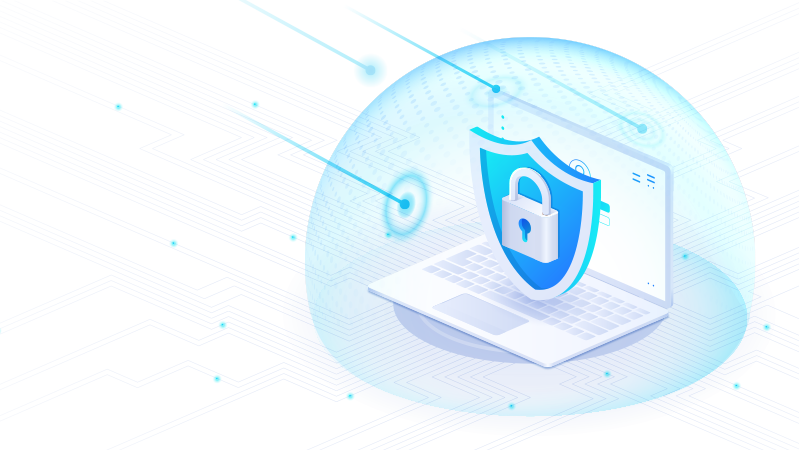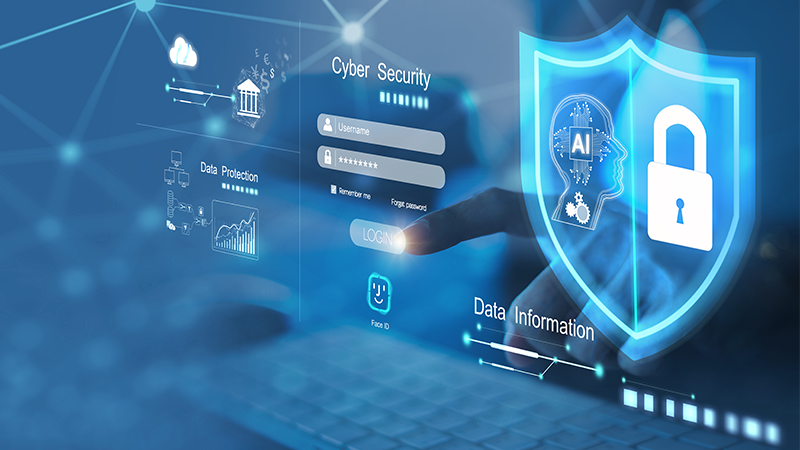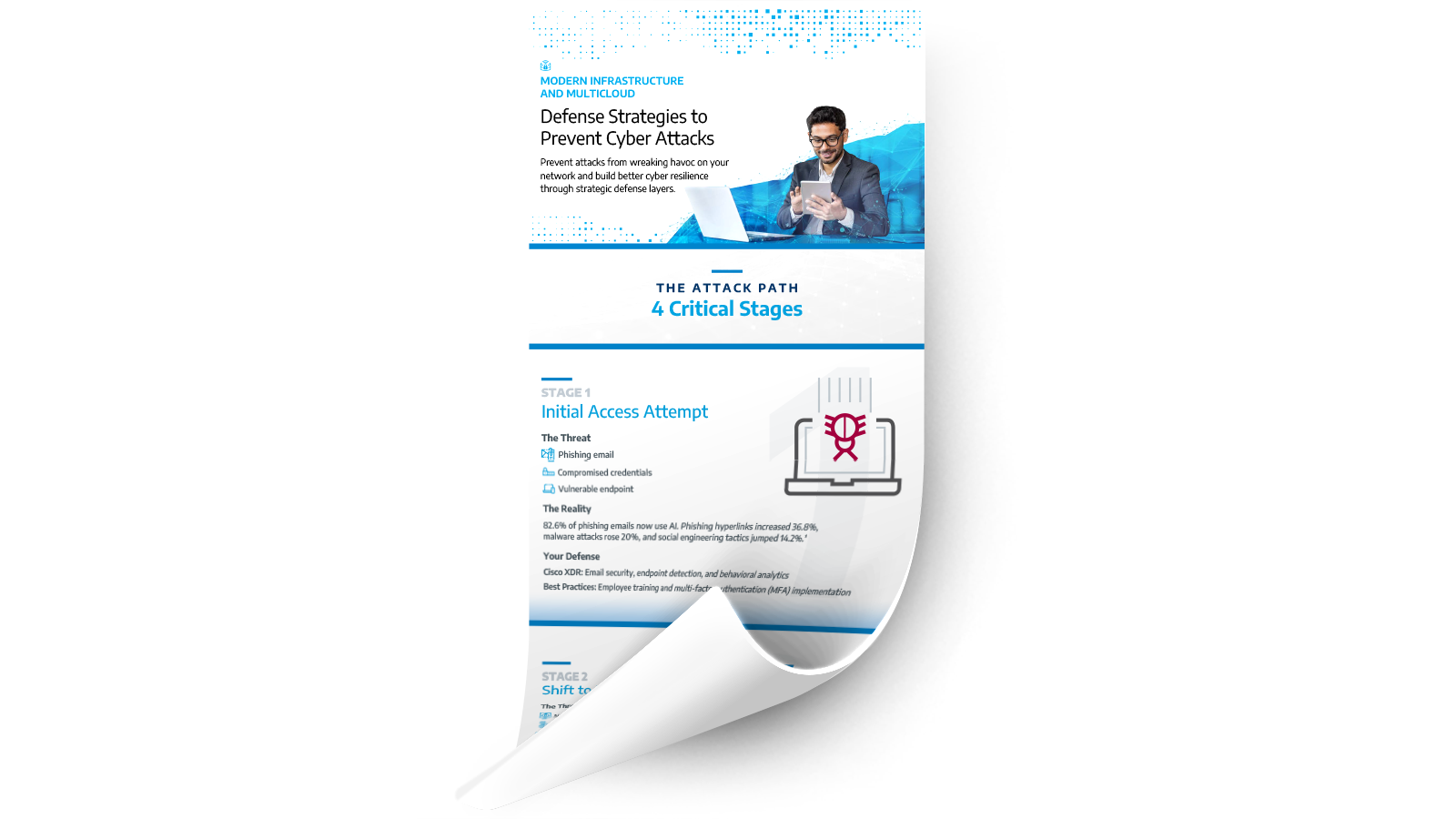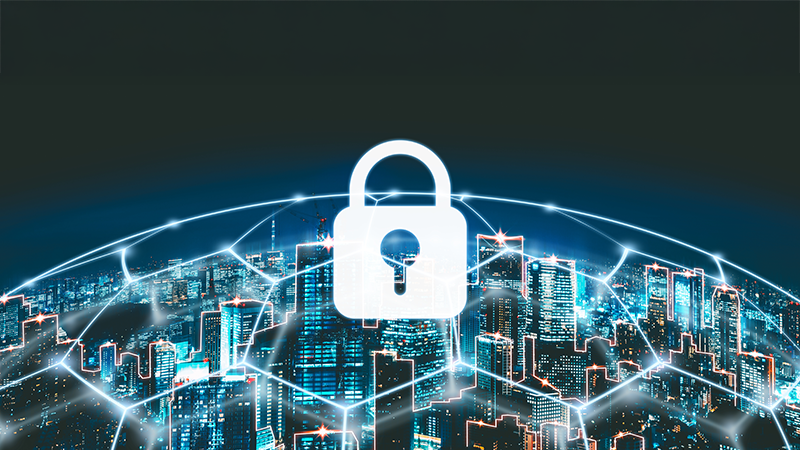Creating Enterprise Cyber Resilience
Securing Business Operations in an AI‑driven World
Business and security leaders should adopt a proactive approach to cybersecurity, as AI-powered attacks and an increasingly complex threat landscape underscore the critical need for resilience.- Why It’s Time to Evolve from Reactive Defense to Proactive Resilience
- AI Introduces New Threats and Business Challenges
- Cybersecurity Skills Gaps Lead to Operational Crisis
- Embrace Zero Trust and Cloud-native Security Frameworks
- Fighting AI Attacks with AI Intelligence
- How to Plan for Cyber Resilience
- Embrace Advanced Managed Security Services
- Why Connection and Cisco
- Elevate Your Cybersecurity Posture
Creating Enterprise Cyber Resilience
Securing Business Operations in an AI‑driven World
Business and security leaders should adopt a proactive approach to cybersecurity, as AI-powered attacks and an increasingly complex threat landscape underscore the critical need for resilience.- Why It’s Time to Evolve from Reactive Defense to Proactive Resilience
- AI Introduces New Threats and Business Challenges
- Cybersecurity Skills Gaps Lead to Operational Crisis
- Embrace Zero Trust and Cloud-native Security Frameworks
- Fighting AI Attacks with AI Intelligence
- How to Plan for Cyber Resilience
- Embrace Advanced Managed Security Services
- Why Connection and Cisco
- Elevate Your Cybersecurity Posture
Why It’s Time to Evolve from Reactive Defense to Proactive Resilience
The traditional network perimeter has disappeared. Today’s modern enterprises embrace hybrid environments—cloud infrastructure, remote workforces, and edge computing—which have rendered traditional, perimeter-based security approaches obsolete. Yet, many organizations continue to operate reactively, only responding to threats after they’ve disrupted operations. This approach is increasingly costly and untenable.According to Cybersecurity Ventures, cybercrime will cost businesses up to $10.5 trillion in 20251. IBM’s Cost of a Data Breach Report 20252 estimates the average data breach costs organizations $4.44 million, with U.S. organizations reporting their average costs at $10.22 million. The financial impact alone could cripple any business, but add to that lost customer trust, damaged brand reputation, and regulatory compliance complications, and businesses could be feeling the pain of a breach for many years. For enterprises today, organizational security isn’t measured only in how quickly they can respond to incidents, but also in how they prevent attempted attacks from causing operational disruptions.
True cyber resilience means being ready before an attack happens—to protect, detect, and recover quickly enough to keep the business running and customers unaffected. Organizations that embed resilience into their culture and security infrastructure can sustain business continuity, even when under attack. Modern organizations must shift from this reactive state to a proactive approach to cybersecurity to truly achieve business resilience.
Why It’s Time to Evolve from Reactive Defense to Proactive Resilience
The traditional network perimeter has disappeared. Today’s modern enterprises embrace hybrid environments—cloud infrastructure, remote workforces, and edge computing—which have rendered traditional, perimeter-based security approaches obsolete. Yet, many organizations continue to operate reactively, only responding to threats after they’ve disrupted operations. This approach is increasingly costly and untenable.
According to Cybersecurity Ventures, cybercrime will cost businesses up to $10.5 trillion in 20251. IBM’s Cost of a Data Breach Report 20252 estimates the average data breach costs organizations $4.44 million, with U.S. organizations reporting their average costs at $10.22 million. The financial impact alone could cripple any business, but add to that lost customer trust, damaged brand reputation, and regulatory compliance complications, and businesses could be feeling the pain of a breach for many years. For enterprises today, organizational security isn’t measured only in how quickly they can respond to incidents, but also in how they prevent attempted attacks from causing operational disruptions.
True cyber resilience means being ready before an attack happens—to protect, detect, and recover quickly enough to keep the business running and customers unaffected. Organizations that embed resilience into their culture and security infrastructure can sustain business continuity, even when under attack. Modern organizations must shift from this reactive state to a proactive approach to cybersecurity to truly achieve business resilience.

AI Introduces New Threats and Business Challenges
While enterprises use AI to improve visibility, strengthen defenses, and automate response, malicious actors are putting AI to work to rapidly scale attacks and mutate their approaches to avoid detection. According to IBM’s recent report3, 16% of breaches reportedly involved attackers using AI, often in phishing and deepfake attacks. AI helps bad actors compress their attack timelines from weeks to hours, which makes it imperative that organizations can detect threats and respond to them in near real time.
Cybercriminals have embraced AI to launch sophisticated, multi-pronged campaigns. According to the World Economic Forum’s Global Cybersecurity Outlook 2025 report4, 47% of organizations indicated GenAI as a top concern as cybercriminals harness the “efficiency of AI to automate and personalize deceptive communications,” and some 42% of organizations reported that they had experienced a successful social engineering attack in the past year.
What once took weeks or months to orchestrate can now unfold in hours or days. The 2025 Verizon Data Breach Investigations Report5 found that 44% of breaches now involve ransomware, as attackers exploit expanded attack surfaces across cloud environments, IoT devices, and remote endpoints. Check Point Software’s State of Cybersecurity 20256 report found that organizations, on average, experience 1,673 attacks per week, which is 44% higher than the average number of weekly attacks per organization in 2023. The attacks enterprise organizations face today are more complex, realistic, and targeted than ever before.

Change Happens. EXPERTISE WINS.™
Power up your team with the latest modern infrastructure solutions to drive greater productivity, collaboration, and security.Talk to an Expert
Cybersecurity Skills Gaps Lead to Operational Crisis
The skills gap doesn’t simply mean organizations are understaffed. It means they are at risk. Security leaders struggle to identify which skills their organization lacks and building an internal security operations center requires significant investment in talent, tools, and training. With teams stretched thin, alert fatigue becomes an overwhelming reality, and vulnerabilities remain unchecked as threats continue to multiply.
Without sufficient coverage and coordination, even mature organizations can face prolonged downtime and costly remediation. When talent shortages go unaddressed, security operations suffer—and the financial impact is measurable. According to IBM’s research8, the skills shortage adds an average of $1.76 million in additional breach costs. Fortinet’s 2024 Global Cybersecurity Skills Gap Report9 also found that 58% of organizations cite untrained IT staff as a major cause of data breaches. These cybersecurity operational skills gaps translate directly into business risk.

Defense Strategies to Prevent Cyber Attacks
Check out our infographic to learn how to prevent attacks from wreaking havoc on your network and build better cyber resilience through strategic defense layers.
Embrace Zero Trust and Cloud-native Security Frameworks
Industry watchers expect ZTNA to continue to grow in popularity as cloud-native security frameworks extend protections across public and private cloud environments, on-premises data centers, edge computing locations, and remote workforces. Gartner predicts10 that, by 2027, universal ZTNA will reach greater than 40% adoption, and, by 2028, “60% of Zero Trust technologies will actively use AI capabilities to identify anomalous behavior and potential threats in real time, enabling preemptive cybersecurity measures.”
ZTNA offers strategies to avert attacks and minimize the damage they cause when successful. For instance, microsegmentation is a critical component of ZTNA. By dividing networks into smaller, isolated segments with granular access controls, organizations can prevent lateral movement and prevent an attacker from gaining access to the entire environment. Attackers use lateral movement to spread from an initial foothold in an environment to the more high-value targets. But with ZTNA, even if bad actors gain access to one segment, they cannot move freely across the entire environment.

Fighting AI Attacks with AI Intelligence

Fighting AI Attacks with AI Intelligence
The behavioral analysis of an environment can point out when, for instance, unusual data transfers or irregular login patterns occur. The systems can alert security operators to the anomalous behavior or use automation to accelerate a response. AI-enabled tools can isolate endpoints, block malicious traffic, and revoke credentials within seconds. According to IBM’s 2024 report11, organizations using AI and automation in their cybersecurity strategy save an average of $2.2 million per breach compared to those that don’t.
Automated response capabilities are essential in compressed attack timelines. When AI systems detect threats, they not only accelerate response to the incident, but they also allow security teams to focus on strategic tasks rather than routine alert triage.
How to Plan for Cyber Resilience

How to Plan for Cyber Resilience
Cyber resilience is a continuous improvement effort. Enterprises must commit to regular assessments to validate their cyber readiness and discover vulnerabilities early—before they become a business risk. As the business evolves, so must these cybersecurity best practices to enable enterprises to stay aligned with security operations.
Embrace Advanced Managed Security Services
MSSPs can provide organizations with access to best-of-breed technologies and hands-on experience with the latest tools that very few organizations can keep pace with internally. Partnering with an MSSP ensures that security technologies are current by integrating updates and new capabilities automatically into the service offering.
Managed security services have become a strategic differentiator for many by allowing enterprise organizations to significantly improve their security posture without exorbitant and costly capital investments.

Why Connection and Cisco

Why Connection and Cisco
The integration of XDR and Managed Firewall creates a layered defense that addresses both internal threats and external access risks. Managed Firewall enforces security policies through segmentation, access controls, VPNs, and application filtering. XDR provides unified threat visibility across the environment. Cisco’s ability to integrate with existing infrastructure ensures these advanced capabilities enhance current investments without requiring an infrastructure overhaul. Through Connection’s managed services delivery and Cisco’s cloud-native security platform, organizations get the best of both worlds—enterprise-class technology with the human expertise to interpret and act on the signals in real time.
Elevate Your Cybersecurity Posture
The question isn’t whether to invest in cyber resilience, but how quickly you can partner with industry experts to build the capabilities necessary to protect your business in an AI-driven world. Connection’s managed security services, powered by Cisco XDR and Managed Firewall technologies, provide the expertise, technology, and strategic partnership to accelerate your journey.

To learn more, explore our Modern Infrastructure and Cybersecurity Solutions and Services—or reach out to an expert today!
Contact UsConnection Community
Living on the Edge: Securing Retail IT...
Retailers are under enormous pressure to deliver faster, more seamless customer experiences. From frictionless checkout and real-time inventory visibility to... Read More
Azure VMware Solution: Hybrid Cloud for...
Organizations running VMware workloads are under increasing pressure to modernize without disrupting daily operations. Azure VMware Solution (AVS) provides a... Read More
Microsoft 365 E5: Maximizing Productivity...
To thrive in the modern digital workplace, organizations and their employees need more than just the basic tools to get... Read More
Edge Evolution Powers the Modern Factory
Edge computing has come a long way since the days of content delivery networks. Originally, it was used to cache... Read More
Livin’ on the Edge: How Healthcare IT Can...
If you’ve worked in tech long enough, you know we love our acronyms. We invent new ones, recycle old ones,... Read More
Ready to talk about Modern Infrastructure Solutions?
Call a Connection expert today.
Expert Advice Is Just a Click Away!
- Cybersecurity Ventures, 2025, https://cybersecurityventures.com/official-cybercrime-report-2025/
- IBM Cost of a Data Breach Report, 2025, https://www.ibm.com/reports/data-breach
- IBM Cost of a Data Breach Report, 2025, https://www.ibm.com/reports/data-breach
- Global Cybersecurity Outlook 2025, 2025, https://reports.weforum.org/docs/WEF_Global_Cybersecurity_Outlook_2025.pdf
- Verizon Data Breach Investigations Report, 2025, https://www.verizon.com/business/resources/reports/dbir/
- The State of Cyber Security 2025, 2025, https://www.checkpoint.com/security-report/
- 2024 Cybersecurity Workforce Study, 2024, https://www.isc2.org/Insights/2024/09/Employers-Must-Act-Cybersecurity-Workforce-Growth-Stalls-as-Skills-Gaps-Widen
- IBM Cost of a Data Breach Report, 2024, https://www.ibm.com/think/insights/skills-shortage-directly-tied-to-financial-loss-in-data-breaches
- Fortinet 2024 Cybersecurity Skills Gap Report, 2024, https://www.fortinet.com/blog/industry-trends/gaps-in-skills-knowledge-technology-pave-way-for-breaches
- Gartner Predicts 2025: Scaling Zero-Trust Technology and Resilience, 2025, https://www.gartner.com/doc/reprints?id=1-2KMLUKCE&ct=250326&st=sb
- IBM Cost of a Data Breach Report, 2024, https://www.ibm.com/think/insights/skills-shortage-directly-tied-to-financial-loss-in-data-breaches




